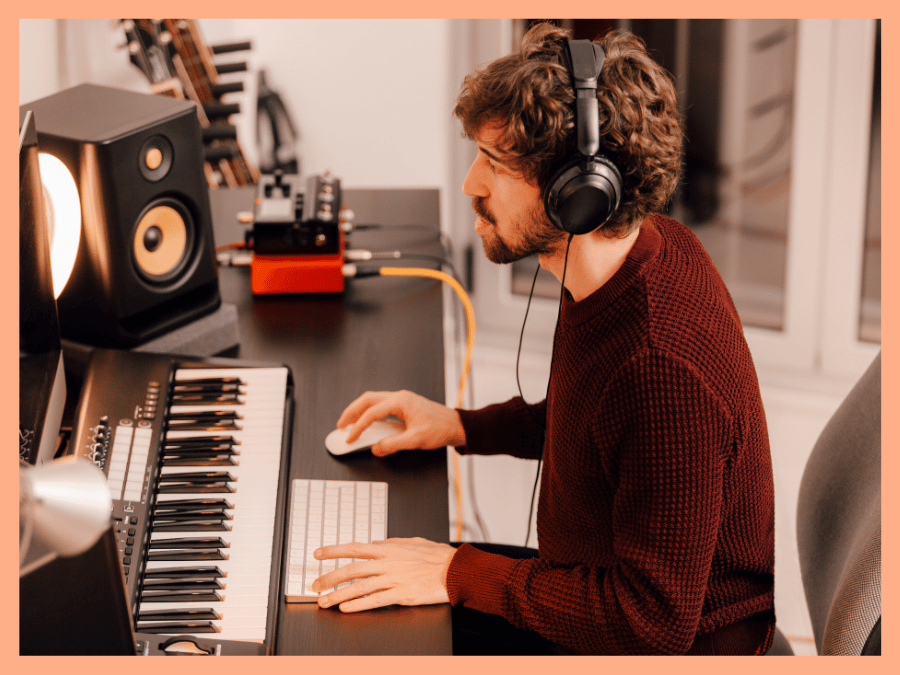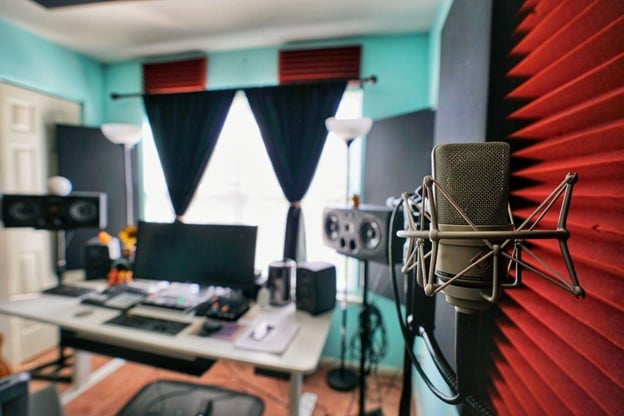Space-saving Tips for Building a Home Music Studio
By: WhisperRoom™
January 17, 2023


While we’d all love to be able to afford a separate space from our home to record our music, the reality means that many of us have to adapt our home spaces into makeshift home music studios where we can harness our craft on a budget. Although renting out a private space for your music production can be ideal, having a home studio for your music production can carry several benefits.
However, we only have a limited amount of space in our apartments for spacious booths and extensive equipment setups, so we have to find innovative ways of saving space.
To help you do this, we’ve created this comprehensive guide to the building tips that could save you space when constructing your home studio. To find out more, keep reading.
Here are seven space-saving tips for building your home music studio:
Let’s start with the obvious. When constructing your home studio, try to ensure that this studio is an entirely separate room from the rest of your apartment or house. This will ensure that you do not have to use the room as a makeshift storage facility or guest bedroom in the future and will limit the number of spillover items you’ll stash in the room for safekeeping.
Better yet, ensure that this room is far away from communal areas like bathrooms or living rooms to limit the ambient noise you’ll hear in the background of your recordings.

Your desk is where the magic happens, so you’ll want the best desk possible for all your monitors, microphones, mixers, and more. However, you’ll also want a desk conducive to the space to avoid overcrowding, especially if you only have a small spare bedroom.
Once you’ve picked the best position for your desk and are happy with the distance between the monitor and the wall, you should measure this and buy a desk that fits these measurements. An excellent desk space-saving tip is investing in a standing desk to increase the storage space you have to work with underneath your desk.
While we’d all love space for personal sound booths, not all of us have the required floor space. Don’t worry; you can still build innovative soundproofing features that keep your sound in and environmental sound out.
When you’re looking for soundproofing space, the walls are your friend. Utilizing your walls for soundproofing is a great way to maximize floor space and create a booth-like room. However, it can be an extensive process to effectively soundproof a room. Consider using high-quality studio foam on your room walls to maximize space and build an acoustically treated space of your own.
Making the best use of height in your home music studio can save you a lot of space. To make the best use of height, consider using a stacking shelf system above your desk and around the room. This is more functional and space-saving than just having a few shelves in a line across a room, meaning you’ll have more space for soundproofing or decoration.
You can then use these shelves to store some of your lighter production equipment, like microphones, when they’re out of use. This is also a great way to incorporate more decoration into your home studio, as a small space. A small space doesn’t have to be boring! You can store awards, frames, or even your first few albums without taking up valuable desk or floor space.
Choosing the best mics for your instruments can significantly affect how much space you use—for example, finding optimal drum mics that record all of the kit, not just a single part, unlike a snare or kick mic.
If you’re concerned about this, consider using an overhead or room mic, as they can pick up sound from the whole kit, not just one part. This will save you space that you would have to use up with additional mic stands.
If you can make structural adjustments to your at-home studio, consider knocking in a wall a few inches and building a closet space. If you are converting a spare bedroom into a home studio, you may have an in-built closet to use.
This is a great way to maximize floor space and store out-of-use or redundant equipment. A closet space will also reduce the need for separate storage solutions like boxes or shelving units, giving you more space for your vital equipment or just a little more breathing room.

If you have a sound booth in your space, you should consider integrating your booth with desk space to save even more space. You can find a practical attachable folding desk for your booth that’s perfect for your laptop, mouse, and other technology like memory banks.
This unassuming desk folds down when not in use, giving you more space to work, and can attach it wherever you need it to. You also won’t need to worry about taking up additional space with extension cords, as this comes with two USB outlets and two 210 V outlets so that you can work with comfort. Integrated solutions like these are the perfect space-saving hack!
Making the best use of height and floor space will allow you to create a productive work environment that inspires you to create great music. WhisperRoom can help you do this with your sound isolation enclosure in many different sizes. Still, as you can see, there are some great ways to optimize your at-home music studio by making quick space-saving adjustments.
Don’t forget to share this post!